 DISCUSSION: What is a work? John Dante Prevedini leads a discussion about The performing artist as co-creator, including contributions from Halida Dinova, Yekaterina Lebedeva, Béla Hartmann, David Arditti and Stephen Francis Vasta.
DISCUSSION: What is a work? John Dante Prevedini leads a discussion about The performing artist as co-creator, including contributions from Halida Dinova, Yekaterina Lebedeva, Béla Hartmann, David Arditti and Stephen Francis Vasta.
Behind the Wall of Sleep
One of music's most extraordinary abilities is its capacity to create alternative realities; to engender other worlds for at least as long as a listener pays it the attention it is due while it unfolds and reveals itself through the medium of time to him or her. In this regard it has quite a lot in common with the phenomenon of dreaming. Consequently, we should not be at all surprised to find that dreams and dreaming have held a constant fascination for composers, especially in the twentieth century. Indeed one of the canonical and most influential texts of the twentieth century was a book dated 1900 called Die Traumdeutung written by a certain Dr Sigmund Freud. Therefore today's selections make up a five movement dream symphony. It wasn't planned but it also just so happens that three of the dream pieces I have chosen happen to be for a capella forces and as such this week's offering also serves as a tangential tribute to that most innate - but no less mysterious for all that – of musical instruments: the human voice. These pieces show that the familiarity of the human voice has in no way reduced its continual fascination to composers, nor to listeners or singers. In our evolution we may have started singing before we started speaking. Maybe that's why when words fail the only thing we can do to maintain our humanity or our sanity is to sing or more generally to make music.
1: Ljubica Marić (1909-2003):
Threshold of Dream (1961)
The day of dreams, the day
when the whole earth will be just
a soft threshold of the unearthly
These are words (in translation and in Latin script) penned by Serbian poet Marko Ristić which his compatriot and peer Ljubica Marić chose to set in this short but sumptuous cantata for woman's voice, male narrator and extremely skillfully deployed chamber orchestra. As for its soundworld the only thing that comes to mind is that it seems like something between Janáček and Górecki but its enchantment lies in its idiosyncrasy. A uniqueness that captivatingly conveys 'the underworld of thoughts', 'the voice of silence', 'the eternity of flowing', 'those shadows without reason', 'the day that will endure beyond time'.
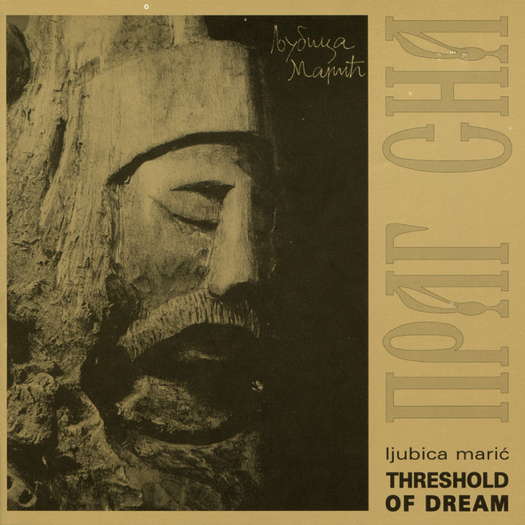
Ljubica Marić: Threshold of Dream
2: Erik Bergman (1911-2006)
Dreams, Opus 85 (1977)
The extraordinary Tapiola Choir that performs on this disc really puts my own, along with that of my classmates', Christmas carol singing, some forty years ago, into context. Never more so than in this devilishly difficult piece by honorary citizen of Oblivionopolis; Finnish composer Erik Bergman. There is no text to this relatively brief three-movement magical work but with titles like Echoes, Solitude and Restlessness what more need be said? The children, including a superb solo soprano in the middle movement, babble, bubble, breathe, blow and buzz their way through this dreamworld of sounds and syllables as if, notwithstanding the difficulties, they are having tremendous fun and exulting in the expert execution of this most demanding of scores.
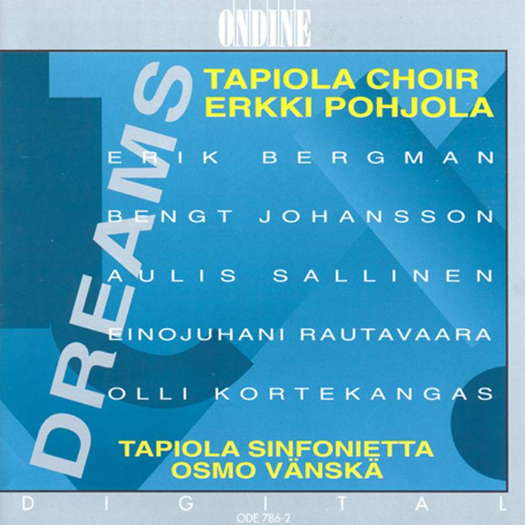
Dreams. Tapiola Choir / Erkki Pohjola. © Ondine
3: Arthur Lourié (1892-1966):
In the Sanctuary of Golden Dream (1919)
In order to get close to doing justice in words to the otherworldly paradise that this music creates in sound, you would need to be a poet of the calibre of the one whose words it is a setting: Aleksandr Blok. Not being Blok I am forced to flail around like a drowning man in paltry prose. Claude Lévi-Strauss wrote that 'melody is the supreme mystery among the sciences of man.' I would argue that harmony is even more mysterious and supreme. This piece is one of the greatest manifestations of that sublime unfathomable mystery. The mystery of why a universe exists in which the strange phenomenon of sound travels in waves of varying velocities and that natural selection has endowed us with the apparatus to transform the superimposition of those waves into what we perceive as harmony. Extraordinary as all this is it conveys nothing of the alchemy of the soul that enables harmony or a progression of harmonies through time to have the transformative, transcendent effect that it does on us. Erich Heller once wrote that 'Van Gogh's objects are the chance receptacles of all the homeless energy of the spirit.' To give some idea of the mesmerising beauty and rapturous mystery of this piece I would substitute Arthur Lourié's music for Van Gogh's objects in that quote.
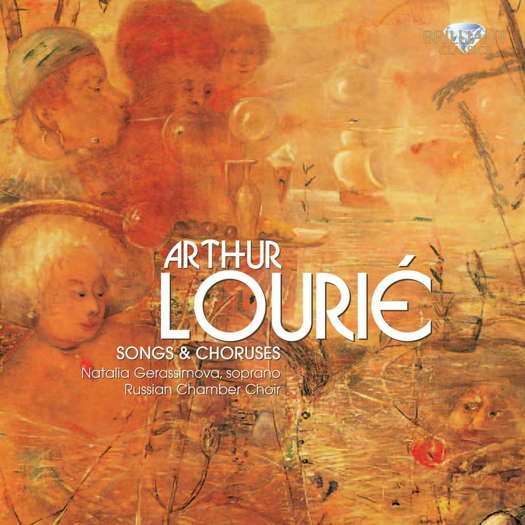
Arthur Lourié: Songs & Choruses. © 2010 Brilliant Classics
4: Anne Boyd (born 1946)
As I Crossed a Bridge of Dreams (1975)
I don't know if Anne Boyd knew Lourié's piece when she composed this work but I think it makes a good follow up to In the Sanctuary of Golden Dream. Whereas the Lourié is dripping in gold leaf and saturated with Eastern Orthodox choral intensity, the inspiration for As I Crossed a Bridge of Dreams comes from much further east. Boyd has often spoken about how she considers Australia as Australasia and how its geographical location and concomitant history has far more importance than its seemingly British colonial surface character would seem to imply or wish to acknowledge. She grew up in the outback in Queensland and has said how when she first heard Japanese music it seemed to her so redolent of her childhood landscape and memories. As a music student she quickly developed a fascination with all things Japanese of which this intoxicating piece is one of her most succulent fruits. It is inspired by texts from a diary written by a woman simply known as Lady Sarashina who lived in Japan more or less a thousand years ago. One fascinating aspect of this piece is that Boyd has never been to Japan (as far as I know) and as such this piece was born from the Japan of her imagination, as she says 'for an artist the imagination is by far our most precious resource'. As such this piece stands and shimmers as a wonderful monument to the beauty and mystery of individual imagination.
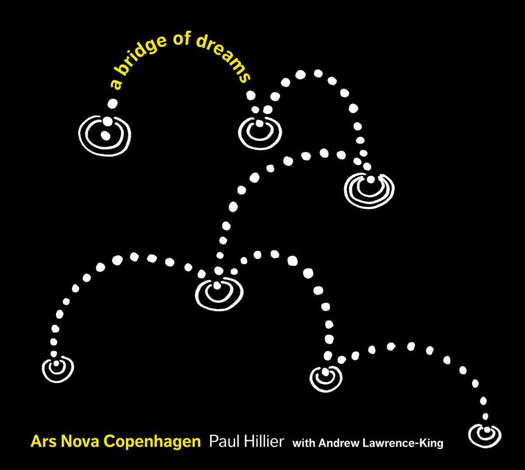
A Bridge of Dreams. Ars Nova Copenhagen / Paul Hillier
5: Tōru Takemitsu (1930-96):
Visions (1990)
In an article dedicated to music inspired by dreams and following a piece indebted to Japanese culture, my last choice for today almost chose itself, at least as far as the composer is concerned anyway. I get the feeling Tōru Takemitsu literally dreamed in sound whether asleep or awake. It is not by chance that you will often find the word dream among the always wonderfully evocative titles of his pieces. But the one I have chosen for today does not contain the word dream nor is it as well known as some of his dream-titled pieces. It is a set of two orchestral pieces which together he called Visions. The first is called Mystery and the second Closed Eyes, which basically says all that needs to be said about dreams and dreaming.
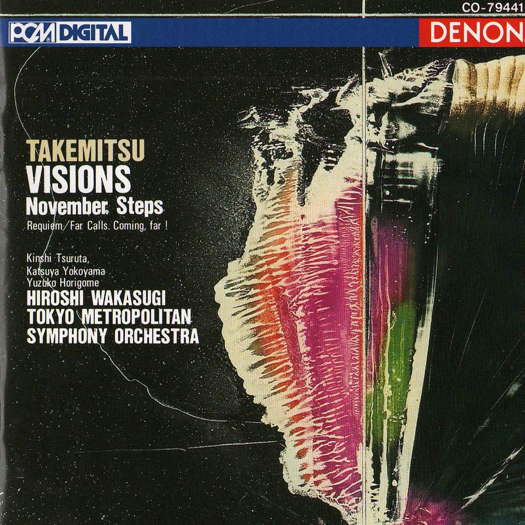
Takemitsu: Visions; November Steps. Hiroshi Wakasugi, Tokyo Metropolitan Symphony Orchestra. © Denon
The rest I will leave up to Tōru-san and his otherworldly magic.
Copyright © 26 March 2023
Robert McCarney,
León, Spain




